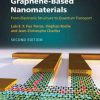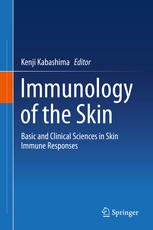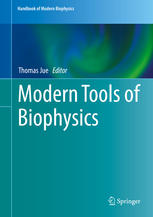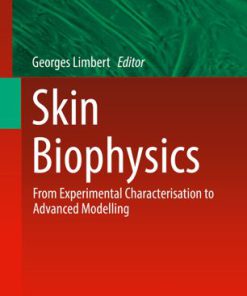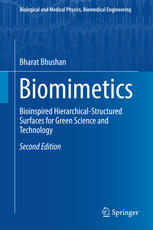Biophysics of Skin and Its Treatments: Structural, Nanotribological, and Nanomechanical Studies 1st Edition Bharat Bhushan 331945708X 9783319457086
$50.00 Original price was: $50.00.$25.00Current price is: $25.00.
This completed downloadable of Biophysics of Skin and Its Treatments: Structural, Nanotribological, and Nanomechanical Studies 1st Edition Bharat Bhushan
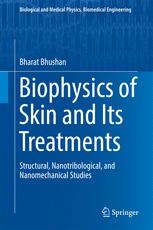
Instant downloaded Biophysics of Skin and Its Treatments: Structural, Nanotribological, and Nanomechanical Studies 1st Edition Bharat Bhushan pdf docx epub after payment.
Product details:
- ISBN 10: 331945708X
- ISBN 13: 9783319457086
- Author: Bharat Bhushan
This book provides a comprehensive overview of the structural, nanotribological and nanomechanical properties of skin with and without cream treatment as a function of operating environment. The biophysics of skin as the outer layer covering human or animal body is discussed as a complex biological structure. Skin cream is used to improve skin health and create a smooth, soft, and flexible surface with moist perception by altering the surface roughness, friction, adhesion, elastic modulus, and surface charge of the skin surface.
Table of contents:
1 Introduction
1.1 Tribological and Mechanical Properties and Triboelectric Effects
1.2 Tactile Perception
1.3 Application of Skin Cream, Tactile Perception, and Role of Tribology
1.4 Organization of the Book
References
2 Skin and Skin Cream
2.1 Skin
2.2 Pig and Rat Skin
2.3 Skin Cream
2.4 Synthetic Skin for Cosmetics Science
References
3 Experimental Techniques
3.1 Animal Skins and Skin Creams
3.1.1 Animal Skin
3.1.2 Damaged Skin
3.1.3 Various Skin Creams and Cream Treatment Procedure
3.1.3.1 Rat Skin—Virgin
3.1.3.2 Rat Skin and Pig Skin—Virgin and Damaged
3.2 Synthetic Skin Samples
3.2.1 Synthetic Skin-1
3.2.2 Synthetic Skin-2
3.3 Physical Characterization
3.3.1 Contact Angle Measurements
3.3.2 Dynamic Viscosity Measurements
3.3.3 Nanoscale Surface Roughness, Friction, Adhesive Force, and Wear Resistance Measurements
3.3.4 Film Thickness, Adhesive Forces, and Young’s Modulus Mapping
3.3.5 Macroscale Friction and Wear Resistance (Durability) Measurements
3.3.6 Nanomechanical Properties Measurements
3.3.6.1 Nanoscratch Measurements
3.3.6.2 Nanoindentation Experiments
3.3.6.3 In Situ Tensile Measurements
3.3.7 Surface Potential Measurements
3.3.8 Humidity and Temperature Control
References
Rat Skin—Virgin
4 Adhesion, Friction, and Wear of Rat Skin With and Without a Common Cream Treatment
4.1 A Common Cream Treatment
4.1.1 Surface Roughness and Friction on the Nanoscale
4.1.2 Effect of the Duration of Cream Treatment on Film Thickness and Effect of Cream Film Thickness
4.1.3 Effect of Relative Humidity and Temperature on Adhesion and Friction on the Nanoscale
4.1.4 Wear Resistance on the Nanoscale
4.1.5 Effect of Cream Film Thickness, Velocity and Normal Load on Friction as Well as Wear Resistanc
4.1.6 Summary
4.2 Various Cream Treatments
4.2.1 Duration of Cream Treatment, Adhesion, Friction, Dynamic Viscosity and Wear Resistance on the
4.2.2 Effect of Relative Humidity on Film Thickness, Adhesive Forces and Effective Young’s Modulus
4.2.3 Summary
References
5 Nanomechanical Properties of Rat Skin With and Without a Common Cream Treatment
5.1 Nanoscratch
5.2 Nanoindentation
5.3 In Situ Tensile Measurements
5.4 Summary
References
6 Triboelectrification of Rat Skin With and Without a Common Cream Treatment
6.1 Understanding of Triboelectric Charge Generation Between Skin and Polystyrene
6.2 Effect of Velocity, Load, and Rubbing Time in Macroscale and Microscale Rubbing
6.2.1 Surface Potential Maps
6.2.2 Effect of Skin Cream Treatment
6.2.3 Comparison of Macroscale and Microscale Rubbing Data
6.2.4 Effect of Velocity, Normal Load, and Rubbing Time on Absolute Surface Potential
6.3 Effect of Relative Humidity on Surface Potential in Microscale Rubbing
6.4 Summary
References
Rat Skin and Pig Skin—Virgin and Damaged
7 Friction, Wear, and Nanomechanical Properties of Virgin and Damaged Rat Skin and Pig Skin With and
7.1 Surface Roughness, Contact Angle, Friction, and Wear Properties With and Without a Common Cream
7.1.1 Surface Roughness, Contact Angle, and Nanoscale Friction
7.1.2 Effect of Velocity, Normal Load, Relative Humidity, and Number of Cycles on Nanoscale Friction
7.1.3 Macroscale Friction and the Effect of Velocity, Normal Load, and Number of Cycles
7.2 Surface Roughness, Contact Angle, and Friction Properties with a Common Cream Treatment—Pig Sk
7.2.1 Surface Roughness, Contact Angle, and Nanoscale Friction
7.2.2 Effect of Velocity, Normal Load, Relative Humidity, and Number of Cycles on Nanoscale Friction
7.2.3 Macroscale Friction and Effect of Velocity, Normal Load, and Number of Cycles
7.3 Nanomechanical Properties of Rat and Pig Skin
7.4 Summary
References
Synthetic Skin
8 Nanotribological and Nanomechanical Characterization of Synthetic Skins With and Without Common Cr
8.1 Surface Roughness and Contact Angle for Rat Skin, Pig Skin, Synthetic Skin-1, and Synthetic Skin
8.2 Coefficient of Friction, Adhesive Force and Film Thickness for Rat Skin, Pig Skin, Synthetic Ski
8.3 Adhesive Force and Film Thickness Maps for Rat Skin, Pig Skin, Synthetic Skin-1, and Synthetic S
8.4 Nanomechanical Properties of Rat Skin, Pig Skin, Synthetic Skin-1, and Synthetic Skin-2
8.5 Summary
References
Skin Tactile Perception
9 Skin Vibrations Created During Touch
9.1 Introduction
9.2 Experimental Apparatus and Procedure
9.2.1 Artificial Finger
9.2.2 Vibration Sensor Selection
9.2.3 Description of Tribometer Apparatus and Procedure
9.3 Results and Discussion
9.3.1 PMMA, Pig Skin, and Synthetic Skin with and Without Cream Treatment
9.3.2 Effect of Normal Load and Velocity
9.3.3 Effect of Cream Treatment Time
9.4 Summary
People also search:
biophysics khan academy
biophysics examples
biophysics
biophysics applications
biophysics seminar
You may also like…
Medicine - Immunology
Biology and other natural sciences
Biophysics and biochemistry of cartilage by nmr and mri 1st Edition Yang Xia
Biology and other natural sciences - Biophysics
Modern Tools of Biophysics 1st Edition by Thomas Jue ISBN 9781493967117 978-1493967117
Uncategorized
Skin Biophysics From Experimental Characterisation to Advanced Modelling Georges Limbert
Cookbooks
Science (General)
Computers - Computer Science
Applications of Firefly Algorithm and its Variants Case Studies and New Developments Nilanjan Dey



